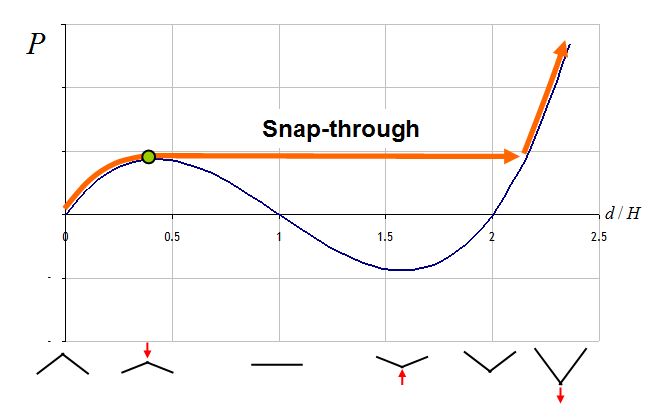I cannot wrap my head around this.
I have made two simple models, a triangular (or curved or arched) beam that is pin ended and has a single point load of 1N downwards at it's center, and a flat beam with the same loading/supports.
The secondary effects response for the flat beam makes sense to me, It looks like this:
a) Point Load (1N)
b) Deflection using a non-linear (secondary) analysis (Light Green)
c) Deflection using a linear analysis (Dark Green)
d) Un-deformed structure
e) Pin supports
Linear analysis: The beam deflects, tension is formed in the beam
Non-Linear Analysis: The tension in the beam "pulls up" the beam so it deflects LESS.
So then, why does the curved beam deflect MORE due to secondary effects? I would assume that since the load creates compression in the members, the secondary analysis would reduce deflection and push the beam upward.
a) Deflection using a linear analysis (Dark Green)
b) Deflection using a non-linear (secondary) analysis (Light Green)
c) Un-deformed structure
d) Point Load (1N)
e) Pin supports

